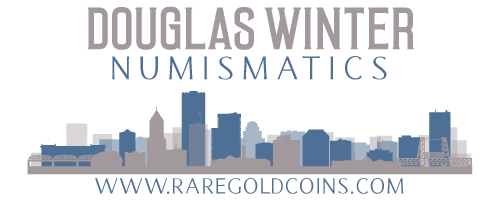Proof-Only Gold Coins
/The presence of a number of important Type Three Proof Liberty Head double eagles in the upcoming 2011 FUN auction got me to thinking about Proof-only United States gold coins. What are these coins, why are they important and do they deserve the market premiums they enjoy? A Proof-only coin is an issue that exists only in a Proof-only format where business strikes could have been produced as well. These coins exist in a variety of denominations but for this blog, we'll focus on the ones in various United States gold series.
Some of the most famous Proof-only gold coins are the double eagles from 1883, 1884 and 1887. The mintage figures for these dates are 92, 71 and 121 respectively. I believe that there are around twenty 1883 double eagles known, maybe fifteen 1884's and as many as thirty to thirty five 1887's.
There are two ways to look at these coins. The commonly accepted way is to consider them solely as a date. In other words, even though there are many Proof double eagles that are rarer than these three, there are no other Type Threes that compare to the 1883 and 1884 in terms of the total number known. If a date collector wants to buy an 1883 for his set of Type Three double eagle he has to buy a Proof. This is different than a rare date like the 1881 or the 1882 that exists in dual formats; i.e., as business strikes and Proofs, and thus presents the collector with two options.
Collectors who are new to double eagles might balk at having to pay $150,000-200,000 for a nice 1883 double eagle when they can purchase a Proof of comparable rarity from this era for half as much--or less. Why, they wonder, does a Proof-only issue get such a high premium?
The mistake that they are making is to compare the 1883 to, say, an 1880. They need to look at the rarity of the 1883 on an absolute level. The 1883, from the standpoint of total number known, is even rarer than such celebrated issues as the 1854-O and the 1856-O; two issues that now sell for $300,000-500,000. If the Type Three series were to ever become as popular with date collectors as the Type One series currently is, the current prices for Proof-only issues such as the 1883, 1884 and 1887 could double or triple.
One Proof-only issue that I have always found interesting is the 1863 quarter eagle. Only 30 were made and this is one of the major rarities in the entire quarter eagle series. In the Liberty Head design it is the third rarest issue, trailing only the 1854-S and the 1841. The 1863 is an issue that has alot going for it; most notably its charismatic Civil War issuance. It has been a heralded rarity for well over a century. Values have steadily risen for the 1863 over the last decade and I expect this issue to become more and more sought-after in the future.
Another Proof-only issue is the 1887 half eagle. It has a mintage of 87 and an estimated thirty or so survive. Unlike the 1863 quarter eagle, this is a date that doesn't "feel" like it should be a Proof-only coin; especially given the fact that many of the other Philadelphia half eagles of this era are common in business strike format.
What I think hurts the 1887 most in terms of its appeal is that Liberty Head half eagles are not currently a series that are actively collected by date. The 1887 feels like an overvalued date to me, given that a Gem is worth over $100,000 as compared to less than half this amount for comparable Proofs of this era that aren't Proof-only.
Two of the most interesting Proof-only issues are the 1875 and 1876 three dollars. Both are less rare than their original mintage figures of 20 and 45 would suggest and this is due to the fact that restrikes exist for both issues. I find the 1875 to be a very intruiging issue because of the magic of the date 1875 as a Proof. Every Proof 1875 issue has an exceptionally low original mintage and at least two denominations (the half eagle and eagle) are virtually unobtainable as business strikes.
Back to the Proof-only Type Three issues. When I first became ingterested in US gold coins, these three issues were heralded rarities and they were bringing $25,000 and higher back when 25 grand could buy you some serious rare Liberty Head double eagles. The 1883, 1884 and 1887 have certainly increased in value over the years but not at the pace of the rare Type Ones or, ironically, even at the pace of the formally-overlooked business strike rarities of the Type Three series.
It will be interesting to see how the next appearances of the rare Proof-only gold issues that I've mentioned are met by an increasingly rarfity-driven coin buying audience. My hunch is that we will see very strong prices on most of these coins and that they represent good value for the collector or investor who fancies true blue-chip numismatic items.














